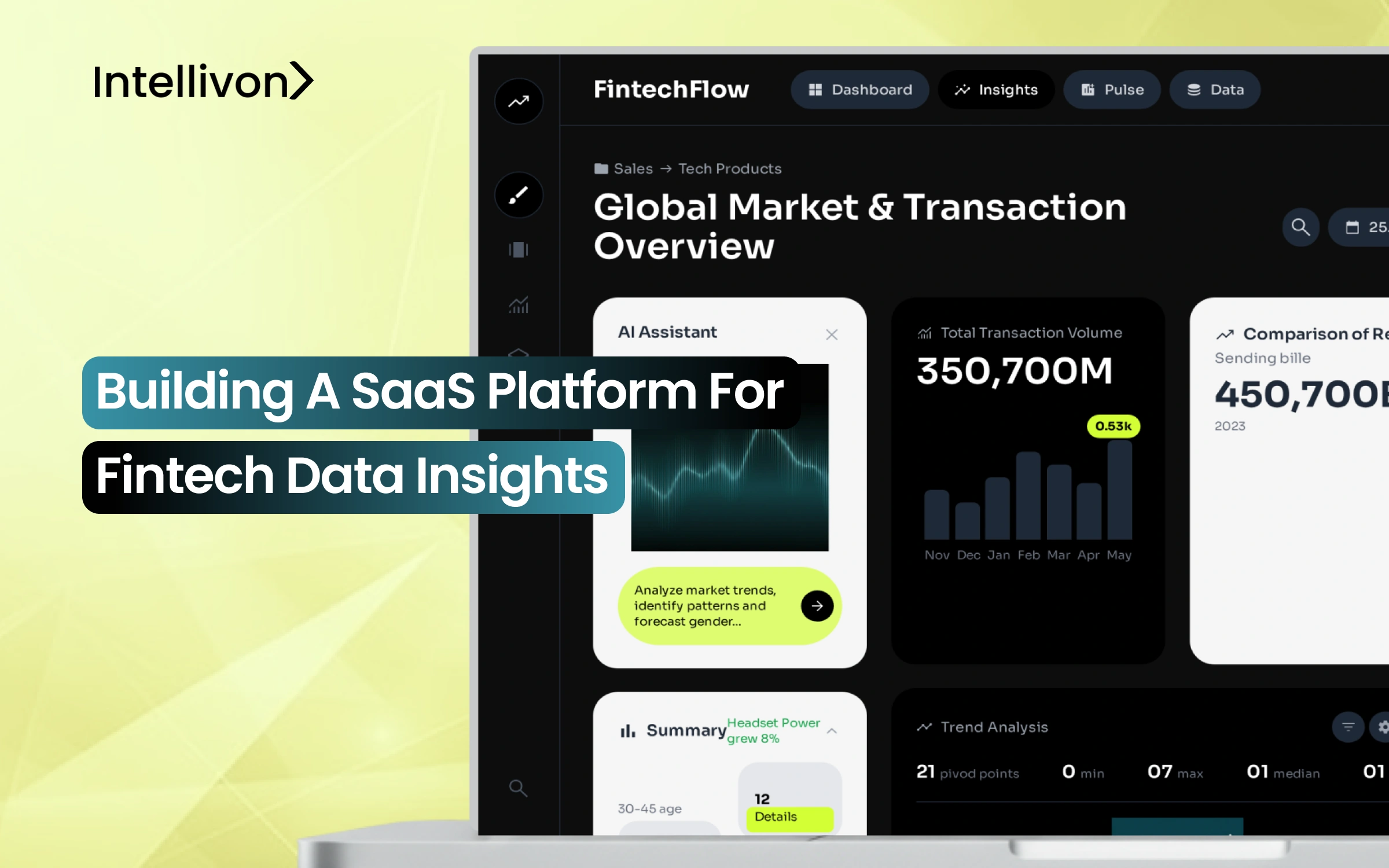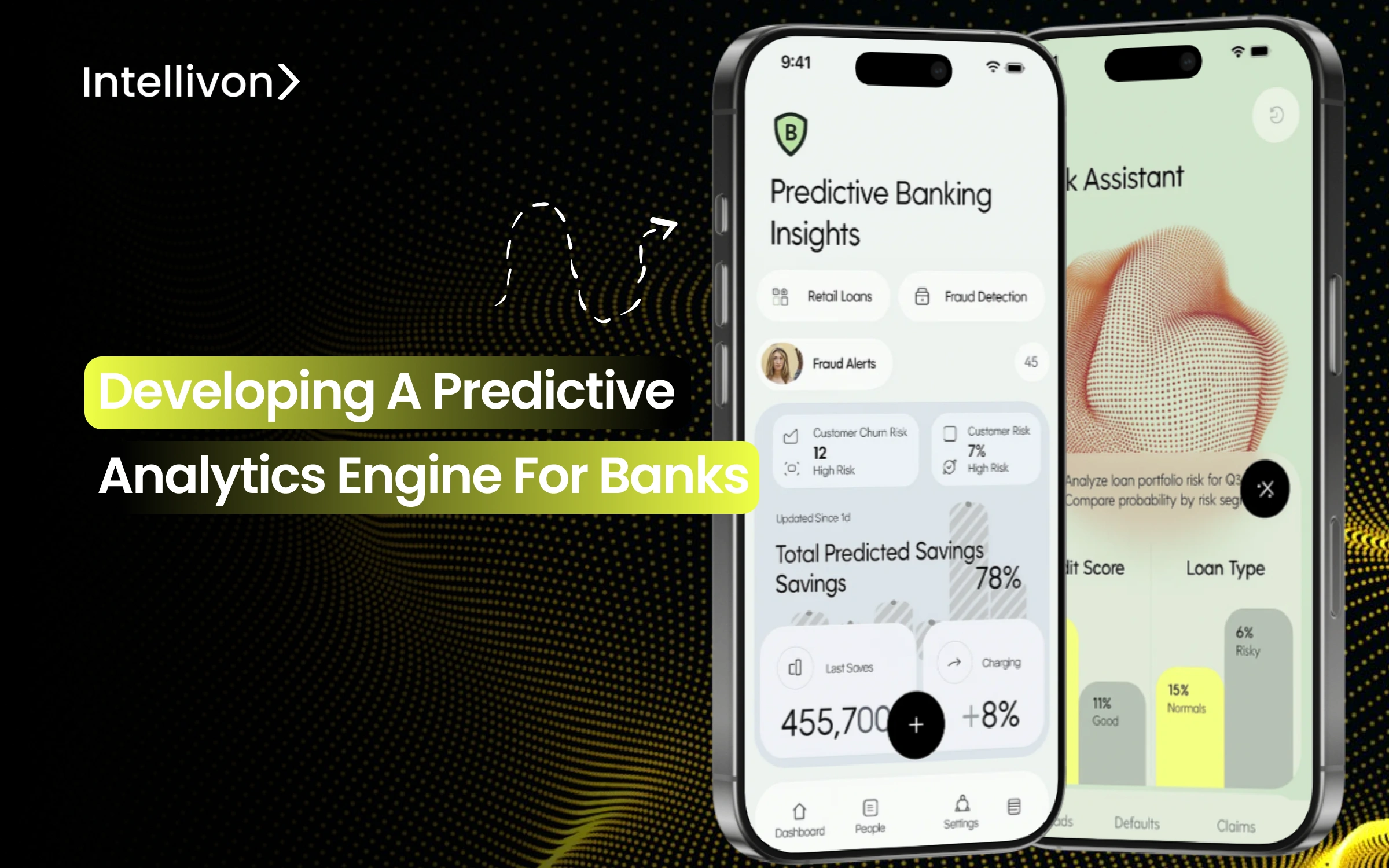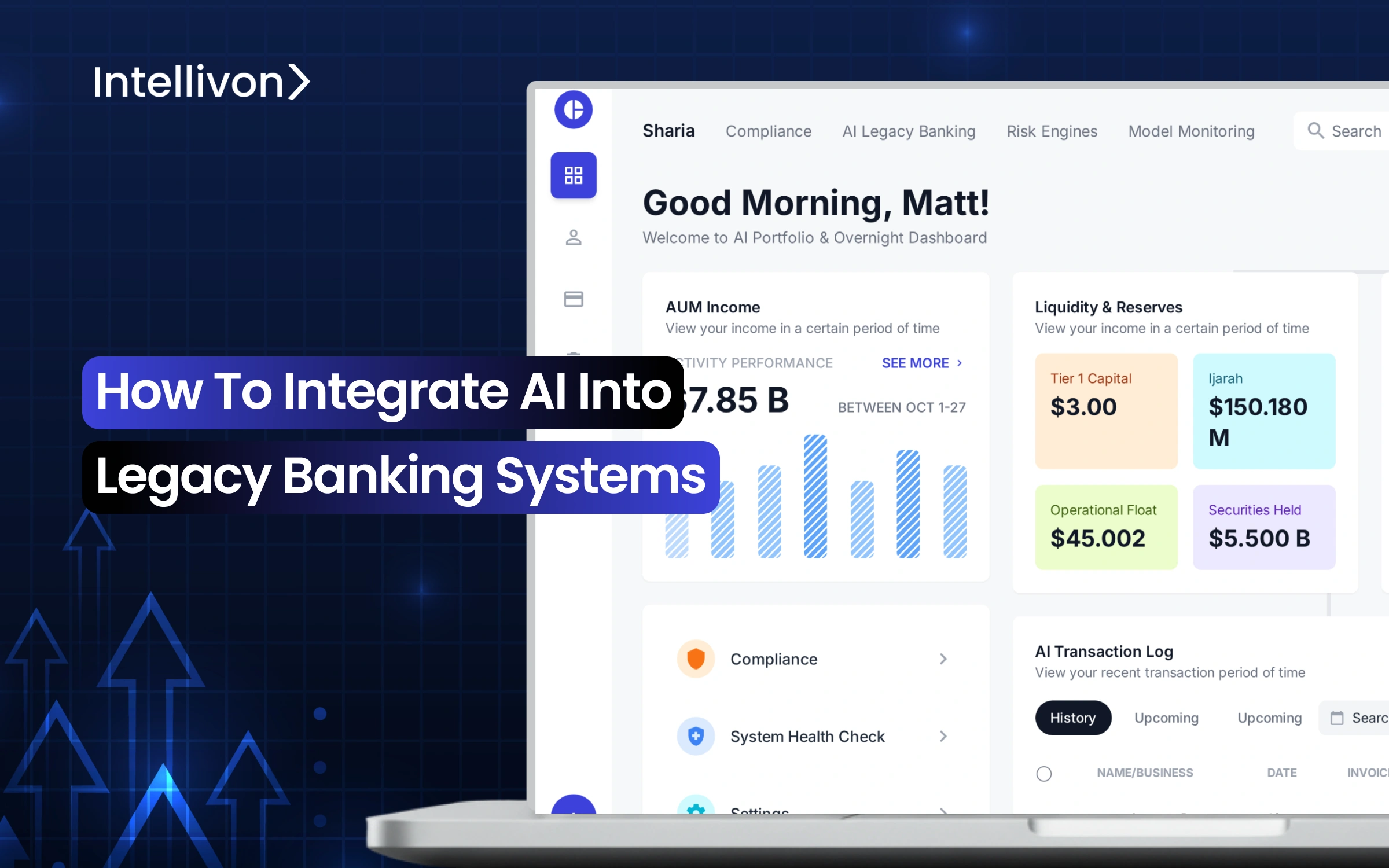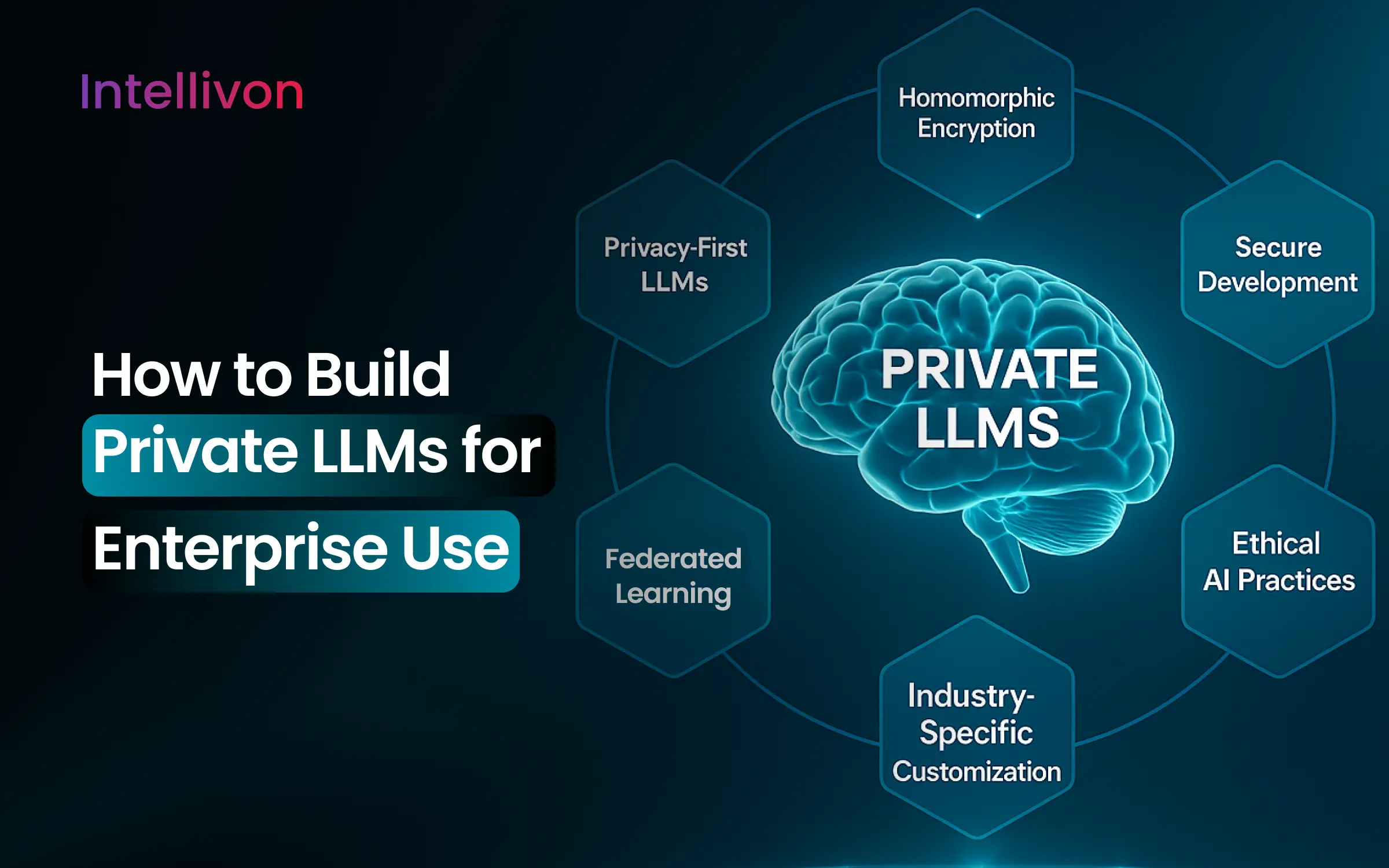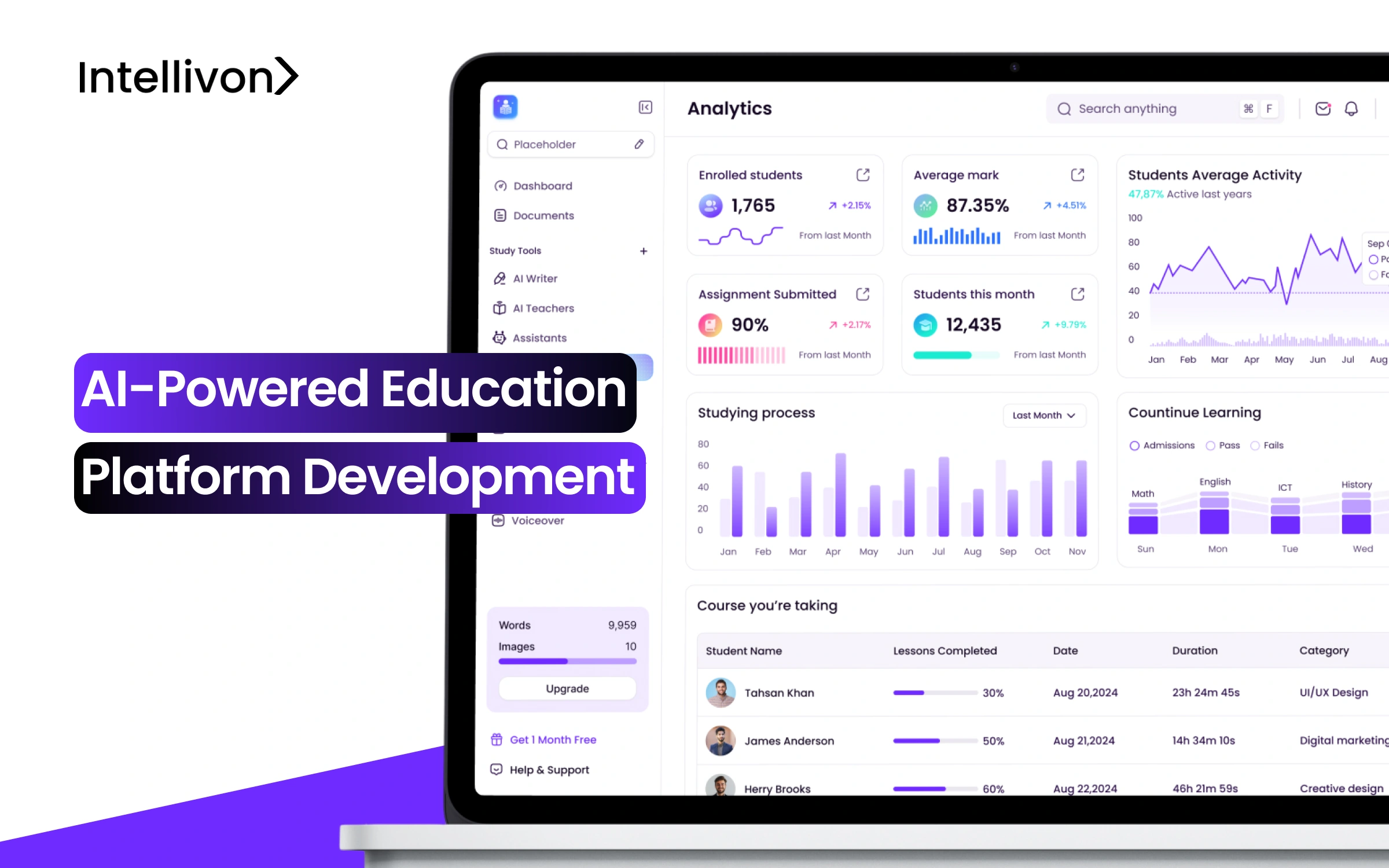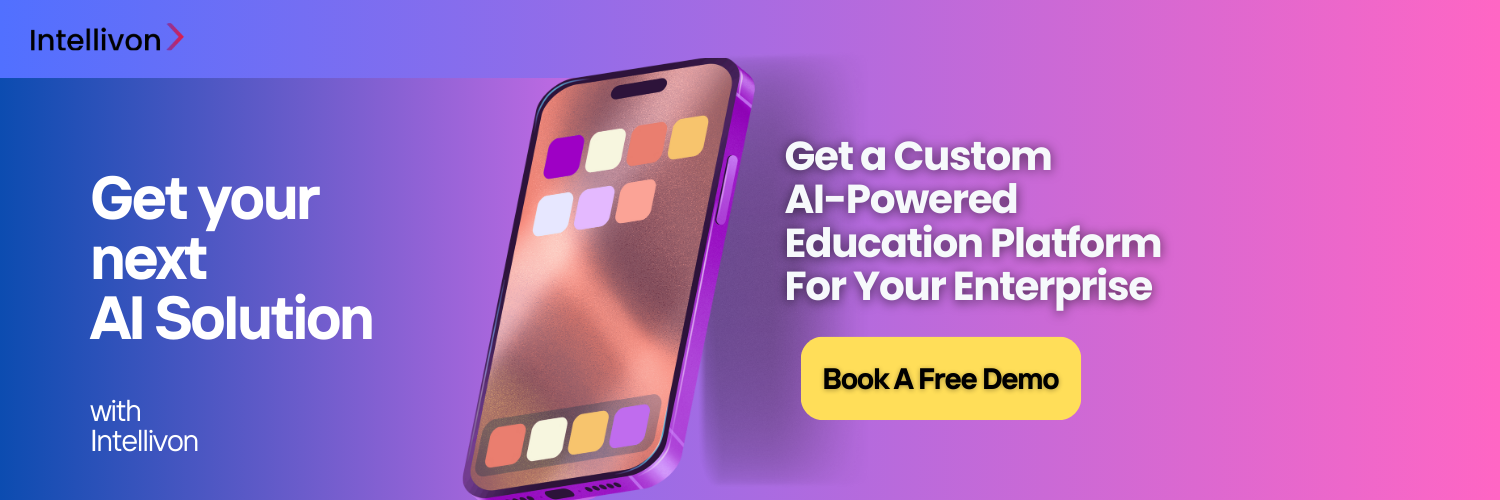Traditional learning platforms are quickly being replaced by smart systems as companies see the drawbacks of static, one-size-fits-all training methods. Leading firms like IBM have moved to AI-powered education platforms, using AI to customize learning paths for over 400,000 employees around the globe. Their AI-driven approach has led to impressive results: a reduction in training time, and an improvement in skill acquisition rates, and much higher employee engagement scores. This shift shows how smart learning systems can respond to individual learning styles, predict skill gaps, and provide targeted content that brings measurable business results.
At Intellivon, we focus on creating scalable AI-driven learning platforms for global education enterprises, helping organizations change their workforce development strategies. Our expertise includes personalized learning algorithms, predictive analytics, and high-quality platform design. In this guide, we will look at the market forces pushing AI enterprise learning, discuss key benefits and real-world examples, address implementation challenges, and share best practices for successful deployment that bring measurable ROI.
Key Insights of the Enterprise Learning Landscape Today
The AI-driven education platform market is growing fast. It is expected to reach $7.2 billion by 2025 and soar to $87.4 billion by 2034. That’s a strong 32% CAGR, fueled by rising demand for personalized learning, adaptive systems, AI tutors, and data-driven analytics across schools, universities, and corporate training.
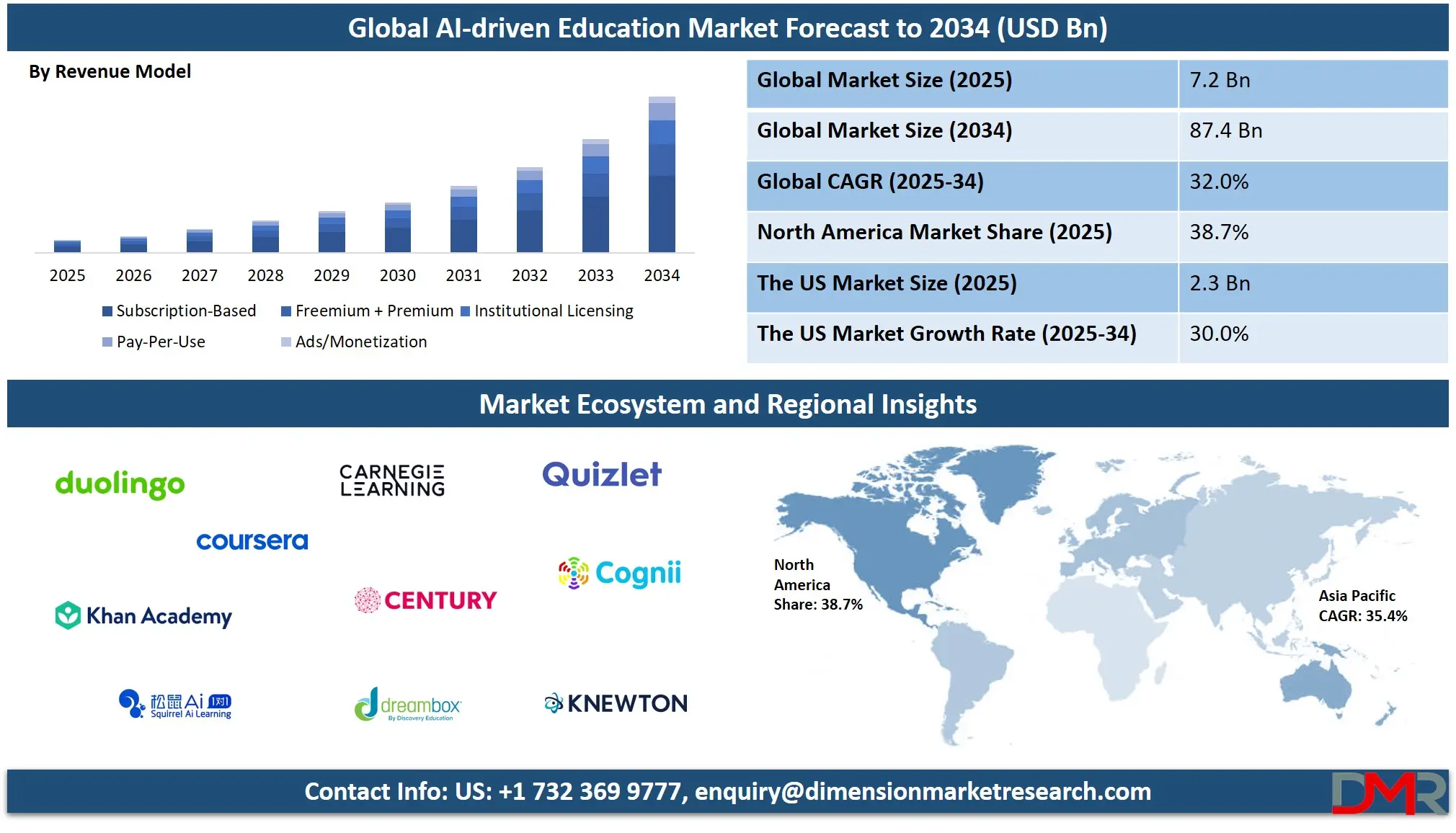
- The corporate training market will hit $362B by 2025, with 89% of firms expecting AI-driven transformation.
- AI enables hyper-personalized learning, boosting engagement and performance. Some enterprises report 15% revenue growth from AI-driven modules.
- Key features include adaptive paths, predictive analytics, 24/7 AI tutors, auto content generation, and real-time compliance tracking.
- AI cuts onboarding time by 40%, lifts performance by 30–40%, and reduces training costs by 20–30%.
- The enterprise AI market itself will soar from $24B in 2024 to $150B by 2030, powered by cloud, NLP, and generative AI.
- In education, 60% of teachers already use AI, 89% of students use tools like ChatGPT, and 86% of institutions apply generative AI.
- AI helps teachers by automating research, lesson planning, and content creation, reducing workload significantly.
- Key challenges include legacy LMS integration, data privacy compliance (GDPR, HIPAA), and workforce change management.
Benefits of AI-Powered Education Platforms for Enterprises
Enterprises now view training as a key part of their strategy. It drives growth, performance, and compliance. However, traditional learning methods often fall short for large, global teams. AI-powered education platforms are changing this situation. They mix automation, analysis, and personalization to provide training that adapts to business needs. Here are the key benefits enterprises gain from these platforms:
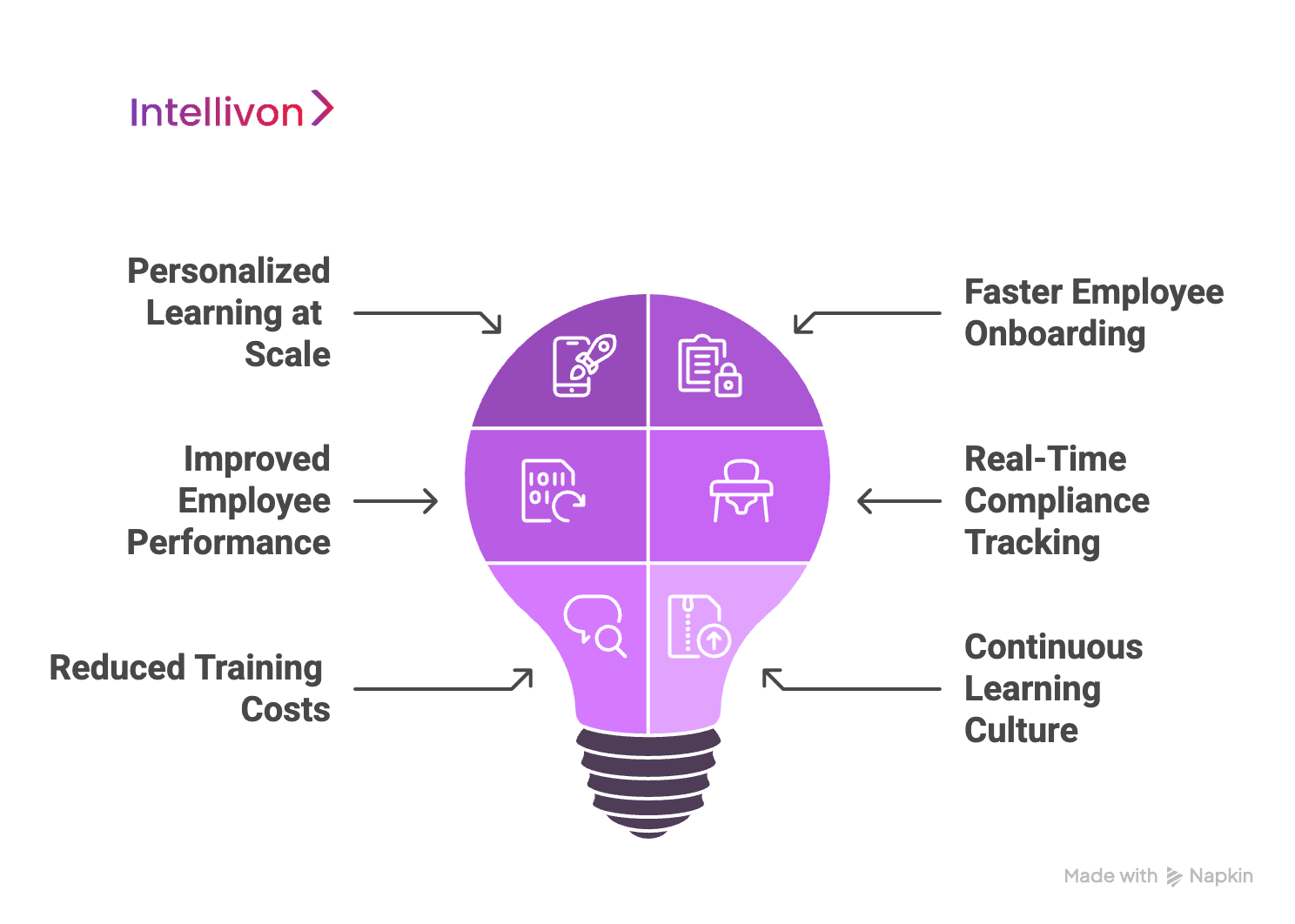
1. Personalized Learning at Scale
One-size-fits-all training rarely works in global organizations. AI platforms evaluate employee roles, past performance, and learning preferences to create tailored learning paths. For instance, a new sales hire may receive training on CRM tools and client communication, while a senior manager might get advanced leadership modules.
This approach ensures that every learner spends time on skills that directly affect their job. As a result, enterprises see better engagement and higher completion rates.
2. Faster Employee Onboarding
Getting new hires up to speed quickly is crucial in competitive markets. AI platforms improve onboarding by offering guided, role-specific learning journeys. New employees can access digital tutors, interactive simulations, and on-demand resources that answer questions in real time.
This method cuts out the need for repetitive manual training sessions. Companies using AI-based onboarding typically report productivity improvements within weeks instead of months, reducing ramp-up time.
3. Improved Employee Performance
Performance gaps can harm both individuals and enterprises. AI tackles this issue by examining real-time data on learner progress and workplace performance. It then suggests targeted modules, refresher courses, or microlearning content aimed at quickly closing skill gaps.
This proactive method ensures that employees continually grow and match their skills with business needs. Studies show that AI-powered training can lead to performance improvements, resulting in stronger overall business outcomes.
4. Real-Time Compliance Tracking
In fields like finance, healthcare, and manufacturing, compliance training is essential. AI-powered platforms automate compliance tracking, making sure every employee finishes mandatory modules. They create real-time dashboards for managers, highlight overdue training, and send automated reminders.
This reduces the administrative workload for HR and learning development teams. Most importantly, it lowers the risk of non-compliance, which can lead to significant fines and damage to reputation.
5. Reduced Training Costs
Corporate training can be very expensive, but AI helps lower costs without sacrificing quality. AI-powered platforms automate repetitive tasks like scheduling, tracking, and grading assessments. They also utilize existing content more effectively by automatically updating or adapting it for various learners.
This efficiency can lead to cost savings for enterprises. More importantly, employees receive higher-quality training experiences, significantly improving ROI on training investments.
6. Continuous Learning Culture
Traditional training often feels like a one-time event. AI changes this by making continuous learning part of everyday work. Employees can access microlearning modules, quizzes, or AI tutors whenever needed.
This ongoing reinforcement helps with knowledge retention and fosters a culture of lifelong learning. Over time, employees become more adaptable, motivated, and engaged in their own development, benefiting both themselves and the enterprise.
In summary, AI-powered education platforms create intelligent, adaptive, and measurable learning experiences. Enterprises can scale training across thousands of employees while ensuring personalized growth, compliance, and return on investment. Next, we will explore the essential features that make these platforms so transformative in practice.
Features That Make AI-Powered Platforms Transformative
Not all learning platforms are created equal. What separates average systems from truly transformative AI-powered education platforms is their ability to embed intelligence, automation, and adaptability into every aspect of training. Successful enterprises consistently rely on a few critical features to scale learning, improve engagement, and achieve measurable results. Here are the most important ones.
1. Adaptive Learning Paths
AI-powered platforms dynamically adjust training content based on an employee’s role, experience, and progress. Instead of forcing everyone through the same modules, learners receive personalized pathways that evolve as they advance. For example, an employee struggling with a concept might get extra exercises, while someone excelling can move faster to advanced material.
This flexibility ensures training stays relevant, engaging, and efficient. Adaptive paths help global enterprises close skill gaps without overwhelming learners.
2. Predictive Analytics for Outcomes
Data is at the heart of AI-driven learning. Predictive analytics allow enterprises to forecast employee performance, identify at-risk learners, and measure the potential impact of training programs. This means organizations no longer wait until after a program ends to see results. Instead, they get real-time insights that guide interventions.
For example, if analytics show low engagement in a compliance course, leaders can adjust the format before completion rates drop. This proactive approach ensures training investments deliver measurable ROI.
3. Virtual AI Tutors and Assistants
Employees often need support outside scheduled training sessions. AI tutors provide 24/7 assistance, answering questions, clarifying concepts, and offering instant feedback. These virtual assistants mimic the responsiveness of human trainers but at scale, ensuring no learner feels left behind.
The availability of on-demand support also encourages learners to explore content at their own pace, boosting confidence and retention. Over time, this reduces dependency on instructor-led sessions and creates a more self-directed workforce.
4. Automated Content Creation and Updates
Keeping training material current is a major challenge for enterprises. AI solves this by generating or updating content automatically. For example, policy changes can be instantly reflected in compliance modules, ensuring accuracy across the organization.
Similarly, AI can repurpose existing material into new formats, such as quizzes, microlearning modules, or simulations. This automation reduces workload for learning teams and ensures employees always have access to up-to-date, relevant training resources.
5. Real-Time Compliance and Progress Tracking
Compliance training is often time-sensitive and high-stakes. AI platforms streamline this by monitoring completion in real time, generating audit-ready reports, and sending automatic reminders to learners. Leaders can view dashboards that highlight progress across departments, regions, or the entire enterprise.
This visibility ensures no one falls through the cracks. For industries with strict regulations, this feature is essential for reducing risk and maintaining trust.
6. Integration with Enterprise Systems
Enterprises run on complex ecosystems of HR, CRM, and productivity tools. AI-powered education platforms integrate seamlessly with these systems, allowing training data to flow across the business.
For example, performance data from HR tools can inform training recommendations, while completed training can update compliance records automatically. This integration eliminates silos, provides leaders with a unified view of employee development, and ensures learning aligns with broader business objectives.
In conclusion, these core features make AI-powered education platforms more than just digital classrooms. They are intelligent ecosystems designed to personalize learning, predict outcomes, and align with enterprise operations.
Our Customized AI-Powered Education Platform Architecture
At Intellivon, we design AI-powered education platforms that meet the unique needs of global enterprises. Unlike generic solutions, our platforms are built with a flexible architecture that integrates seamlessly into existing ecosystems. This ensures scalability, security, and measurable impact from day one. Each layer of the architecture is carefully designed to align with enterprise workflows while delivering personalized learning experiences at scale.
1. Data Integration Layer
Enterprises run on data scattered across HR systems, CRMs, and productivity platforms. Our architecture unifies these data streams into one learning hub. This integration allows the AI engine to understand each learner’s profile, performance, and compliance requirements. The result is smarter, more context-aware training paths.
2. AI Intelligence Engine
This is the heart of our platform. It powers adaptive learning, predictive analytics, and real-time personalization. The engine continuously learns from user behavior, engagement levels, and outcomes. With Intellivon’s approach, enterprises can forecast training impact, identify skill gaps early, and take corrective action before performance dips.
3. Content Creation and Management
Enterprises often struggle to keep training content current. Our architecture includes AI-driven tools for automated content generation and updates. Compliance policies, skill modules, or onboarding guides can be refreshed instantly. Content can also be repurposed into multiple formats, like videos, microlearning, quizzes, ensuring accessibility across roles and geographies.
4. Learning Experience Layer
This is where employees interact with the platform. Intellivon designs interfaces that are intuitive, engaging, and mobile-friendly. Features like AI tutors, gamification, and microlearning modules keep employees motivated. Learners can access personalized dashboards showing progress, achievements, and recommended next steps.
5. Compliance and Governance Controls
For highly regulated industries, compliance is a top priority. Our platforms embed real-time tracking, audit-ready reporting, and automated alerts for overdue training. This architecture ensures enterprises not only meet compliance standards but also build trust with stakeholders.
6. Scalability and Security Framework
Global enterprises demand platforms that scale across regions while maintaining strong security. Intellivon’s architecture is built on cloud-native infrastructure with enterprise-grade encryption, role-based access, and GDPR/HIPAA compliance. This ensures secure deployments that adapt as enterprises grow.
In summary, Intellivon’s customized architecture goes beyond building an education platform. It creates a learning ecosystem tailored to enterprise needs. By combining integration, intelligence, and security, we help global organizations turn training into a strategic advantage. Next, let’s explore real-world use cases where this architecture delivers measurable business impact.
Examples of Successful AI-Powered Education Platforms
The shift to AI-powered education is already happening across industries and regions. The following examples highlight how organizations are using AI to personalize training, reduce costs, and improve performance at scale.
1. Duolingo
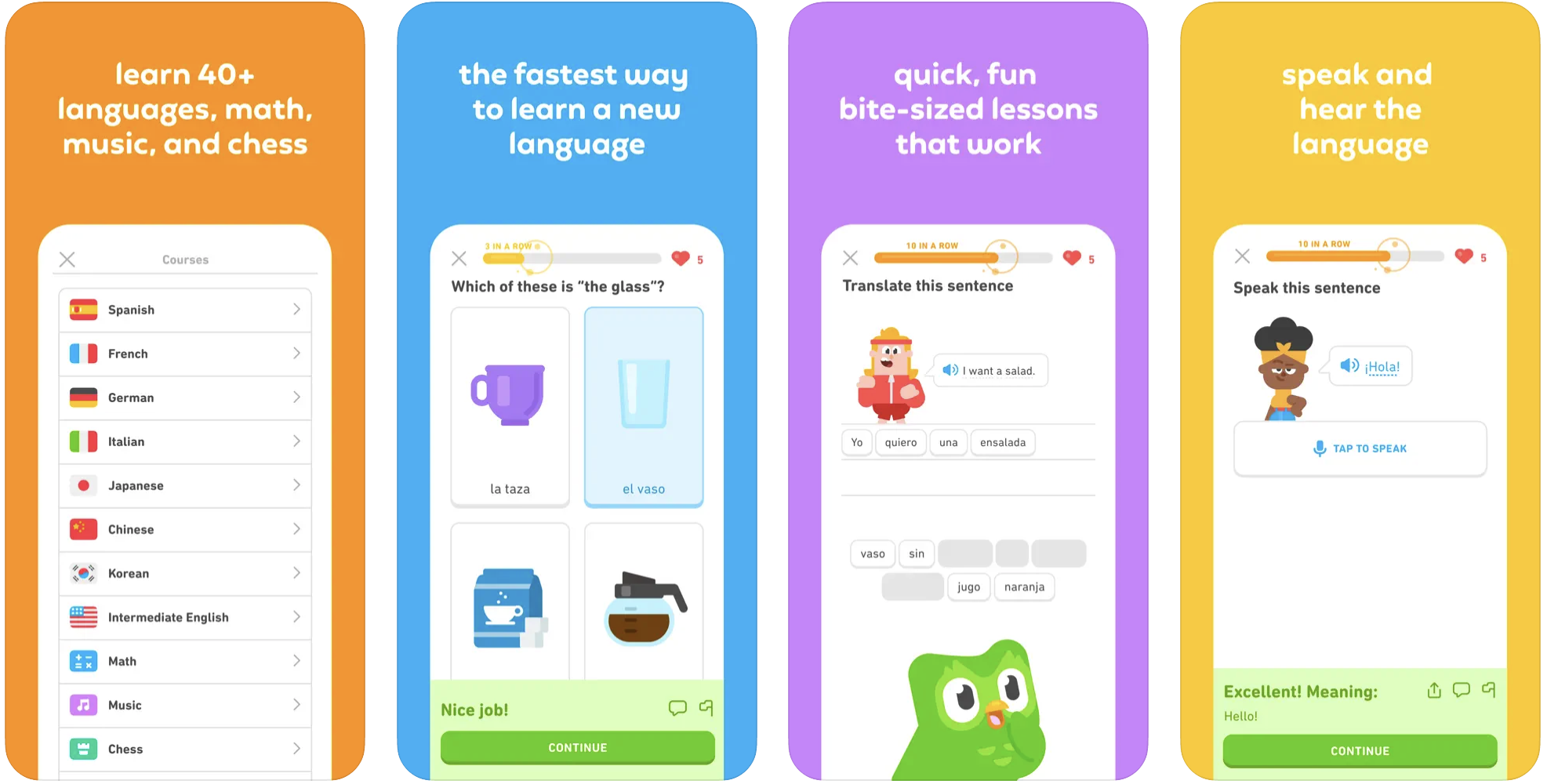
Duolingo has become one of the most popular language-learning apps worldwide. Its platform uses an AI engine called Birdbrain to adjust lesson difficulty in real time. The premium version, Duolingo Max, also includes GPT-4 features like “Explain My Answer” and “Roleplay.” These AI tools guide learners, adapt exercises, and improve engagement. As a result, Duolingo has seen strong growth in both users and learning outcomes.
2. Khan Academy
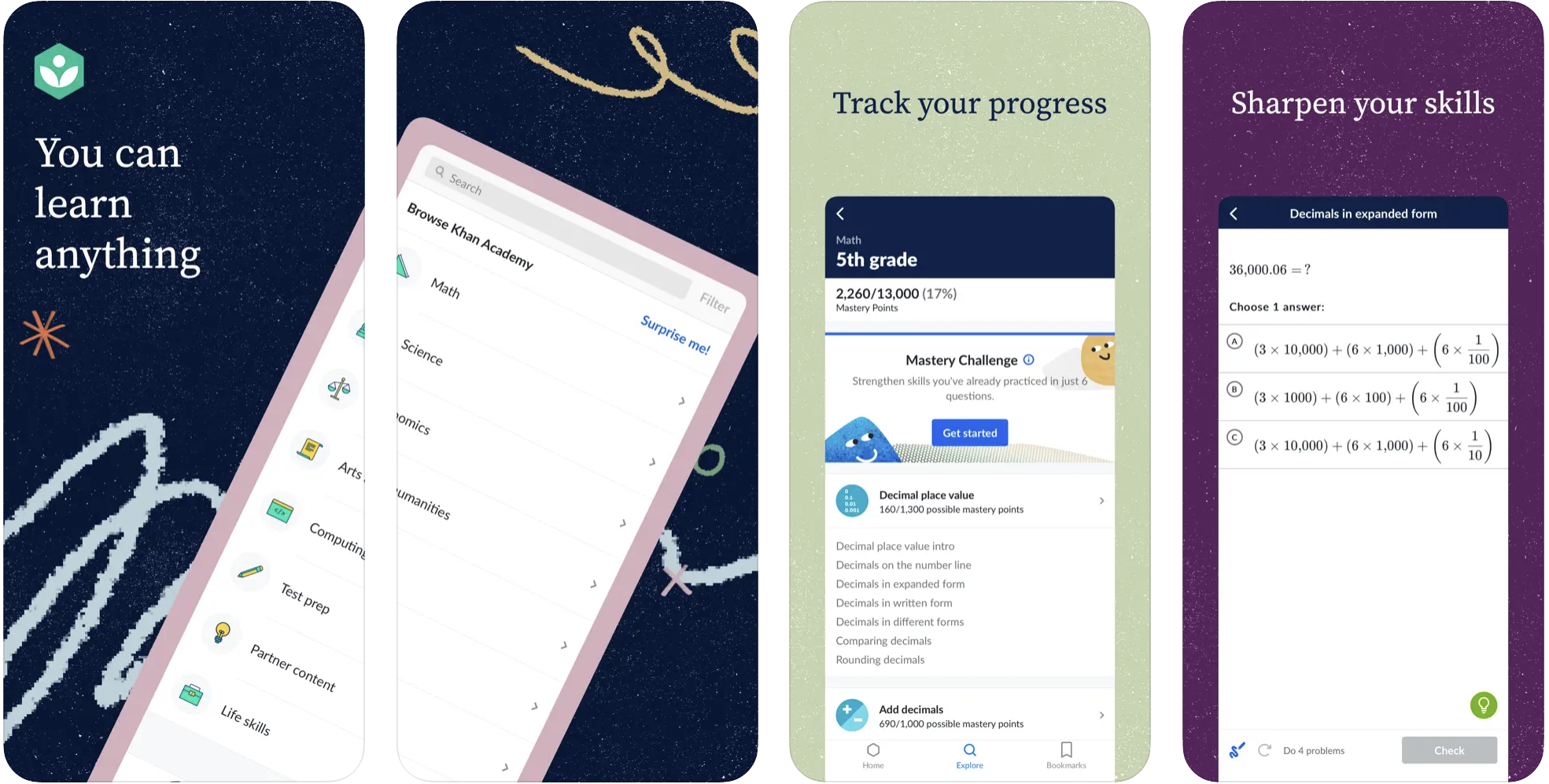
Khan Academy integrates AI through its tool Khanmigo. This AI tutor helps students by guiding them toward solutions instead of simply giving answers. Teachers also benefit from lesson-planning support and real-time progress tracking. Because of this, classrooms using Khanmigo report better engagement and reduced preparation time for educators.
3. D2L Brightspace
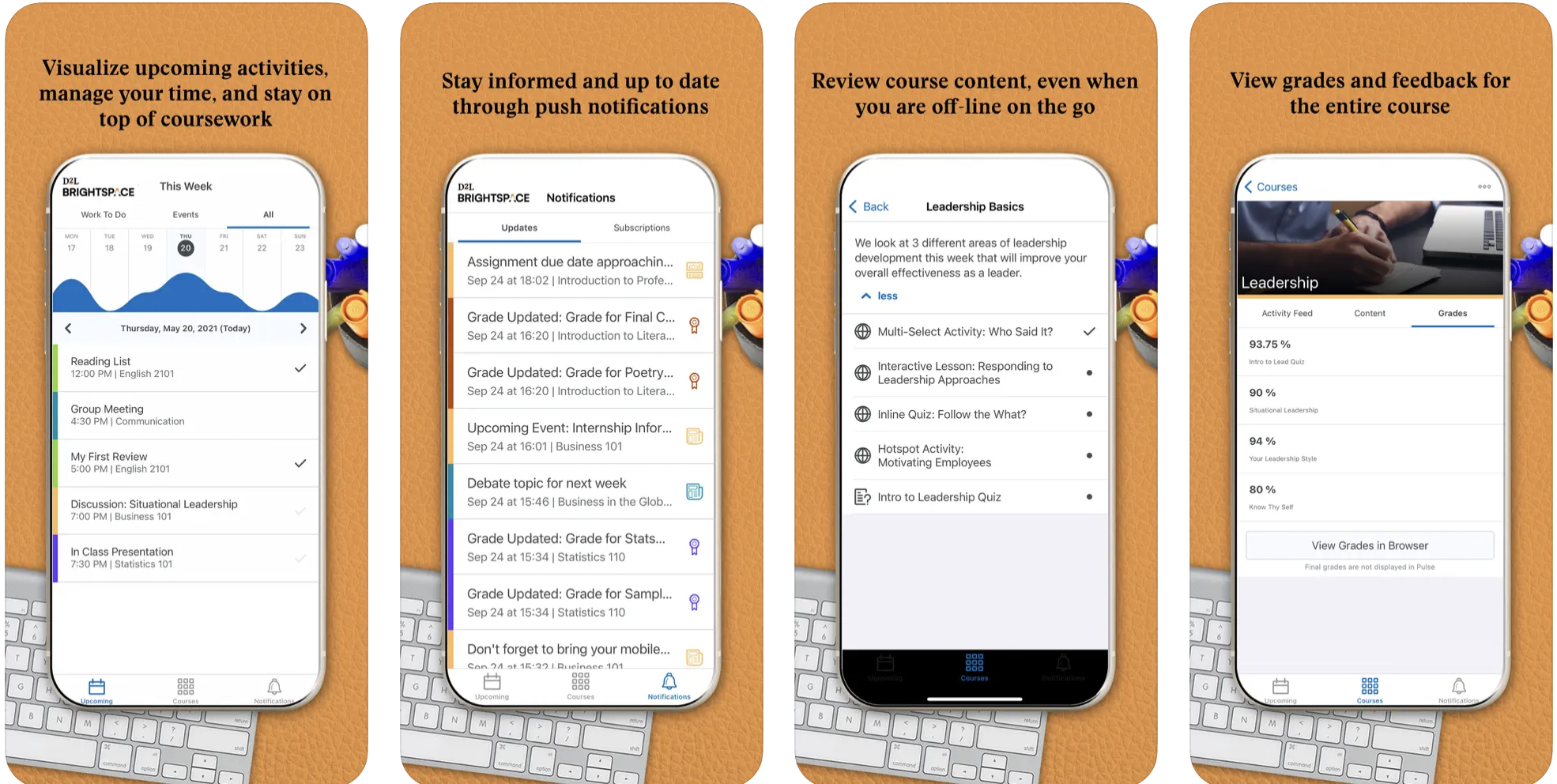
D2L’s Brightspace platform uses AI to personalize and measure learning. The LeaP tool creates adaptive learning paths based on objectives, while Performance+ highlights learner risks and course effectiveness. These insights help teachers and enterprise trainers close skill gaps faster. With AI built into the core, Brightspace offers both personalization and measurable outcomes.
4. CENTURY Tech
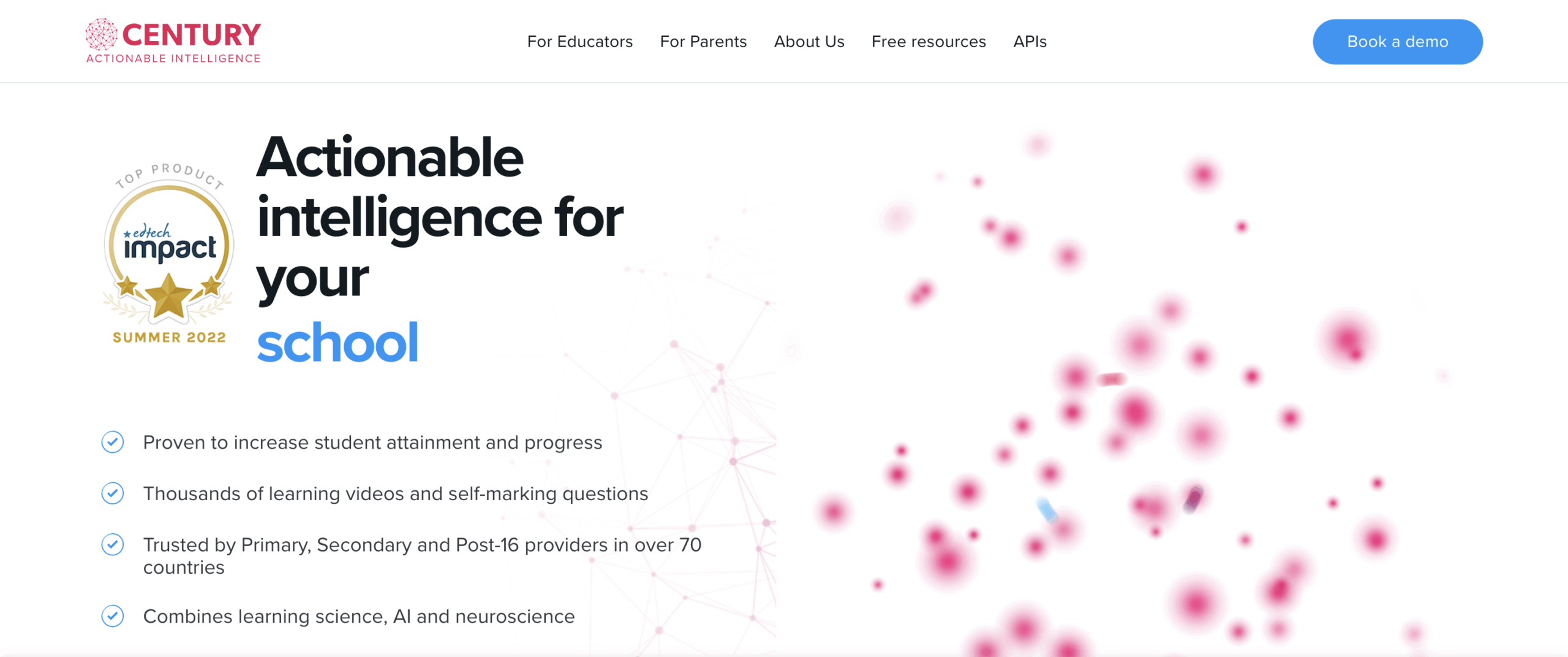
CENTURY Tech was designed as an AI-first education platform. It combines AI, learning science, and neuroscience to create adaptive pathways for each learner. The system also provides teachers with dashboards full of actionable insights. Schools and colleges using CENTURY Tech report improved performance and more time for teachers to focus on learners.
5. Go1

Go1 is a corporate learning platform with one of the largest training content libraries in the world. Its Go1 AI feature helps enterprises find the right modules, map skills, and recommend content automatically. It also updates or replaces outdated materials, keeping training fresh and relevant. This makes learning easier to manage across large, global organizations.
In conclusion, these real-world examples show that AI-powered education platforms are not limited to one region, industry, or format. The lesson is clear: AI transforms training from a static requirement into a dynamic, adaptive driver of business performance.
Overcoming Implementation Hurdles of AI-Powered Education Platforms
Adopting AI-powered education platforms is not always straightforward. Large enterprises face complex systems, strict regulations, and diverse global workforces. These challenges can slow down adoption if not addressed strategically. The good news is that with the right approach, every hurdle can be turned into an opportunity for smarter learning.
1. Integration with Legacy Systems
Most enterprises already use HR systems, LMS platforms, and compliance tools. Adding AI can feel overwhelming because of compatibility concerns.
The key is to adopt platforms with strong API integration and modular architecture. This allows AI tools to plug into existing systems rather than replace them all at once. Enterprises that take an incremental integration approach see smoother rollouts and less disruption to daily operations.
2. Data Privacy and Regulatory Compliance
Enterprises must handle sensitive employee data under strict rules like GDPR and HIPAA. Any AI-powered platform must therefore include features such as encryption, anonymization, and role-based access. Choosing vendors with clear data governance policies is essential.
In addition, enterprises should create internal compliance teams to oversee deployment. This not only reduces risk but also builds trust among employees and regulators.
3. Change Management and Workforce Readiness
Introducing AI can spark resistance from employees who fear job loss or mistrust new tools. Enterprises must counter this with clear communication and training.
Involving employees early in pilot programs helps them see AI as a support system, not a threat. Ongoing workshops and feedback sessions also encourage adoption. When employees understand how AI makes their learning more effective, resistance usually fades.
4. Measuring ROI and Business Impact
Leaders want to see measurable outcomes before expanding investments. Traditional training often fails here because results are difficult to quantify.
AI platforms solve this by tracking engagement, completion rates, and performance improvements in real time. However, enterprises must define success metrics upfront, such as productivity gains, compliance completion, or reduced onboarding time. Aligning AI learning goals with business KPIs ensures clear proof of value.
5. Scalability Across Global Teams
Enterprises often operate across multiple regions, languages, and cultures. Scaling an AI-powered education platform globally is challenging without localization features.
Platforms must support multilingual content, flexible compliance settings, and mobile-first design. Enterprises should also plan phased rollouts, starting with one region before expanding worldwide. This structured approach prevents system overload and allows for cultural adjustments along the way.
In conclusion, while hurdles exist, they are not roadblocks. With strategic planning, careful vendor selection, and proactive change management, enterprises can overcome challenges smoothly. The reward is a scalable, secure, and high-impact AI-powered education platform that drives real business value.
How We Develop AI-Powered Education Platforms For Enterprises
At Intellivon, we know that enterprises need education platforms that are not just functional but also transformative. Our process focuses on creating platforms that integrate seamlessly, scale globally, and deliver measurable ROI. Below is our proven 8-step development process designed specifically for enterprise needs.
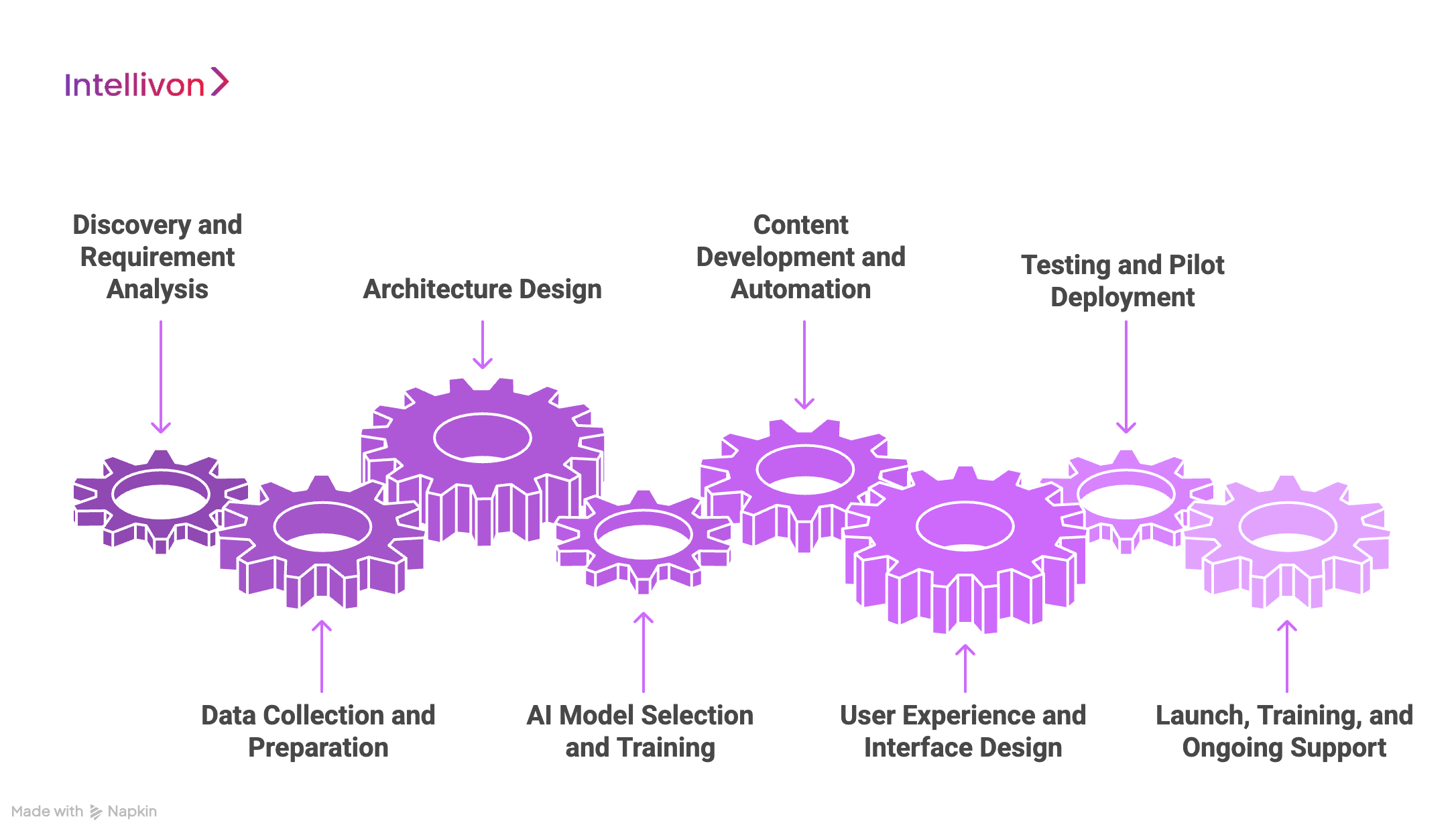
1. Discovery and Requirement Analysis
Every project starts with a deep discovery phase. We meet with stakeholders to understand workforce challenges, compliance requirements, and business objectives. This includes interviews with HR, L&D, and IT leaders to capture both technical and strategic needs.
The result is a clear roadmap that ensures the platform solves enterprise-specific problems rather than offering generic solutions. By aligning early with business goals, we reduce risk and ensure faster adoption.
2. Data Collection and Preparation
AI is only as strong as the data it uses. In this stage, we connect data from HR systems, legacy LMS platforms, and performance tracking tools. Our team cleans and structures the data, ensuring it is accurate, complete, and compliant with privacy standards such as GDPR and HIPAA. We also implement data governance frameworks to maintain integrity across global operations. This step ensures the AI models have the right foundation to deliver reliable insights.
3. Architecture Design
Next, we design a flexible and secure architecture tailored to enterprise ecosystems. The architecture is cloud-native, which allows rapid scaling across regions. At the same time, it is modular, so enterprises can integrate features gradually without disrupting existing systems.
Security is built in from the ground up, with encryption, access controls, and audit trails. By prioritizing both scalability and resilience, we future-proof the platform for long-term use.
4. AI Model Selection and Training
Choosing the right AI model is critical. We evaluate enterprise use cases, such as adaptive learning, compliance tracking, or predictive performance analytics, and select models that fit. These models are then trained on enterprise-specific datasets, which makes them more relevant and accurate.
We use techniques like supervised learning, NLP, and recommender systems to enhance personalization. Continuous retraining ensures the AI evolves with the workforce. This guarantees long-term effectiveness rather than a one-time deployment.
5. Content Development and Automation
Enterprises need content that is current, engaging, and easy to scale. We enable both human-authored and AI-generated training modules. AI automates repetitive tasks such as updating compliance content, converting policies into quizzes, and repurposing materials into microlearning formats.
This reduces the workload on L&D teams while keeping learning materials fresh. Automated translation and localization also ensure global accessibility. The result is content that is always relevant and aligned with enterprise needs.
6. User Experience and Interface Design
No matter how advanced the AI, adoption fails without a strong user experience. Our design team creates intuitive, mobile-friendly interfaces so employees can access training anytime, anywhere. Features include AI tutors for real-time support, gamified progress trackers to keep learners motivated, and dashboards showing personal achievements. The focus is on reducing friction, increasing engagement, and making learning enjoyable. A well-designed interface ensures employees see the platform as a tool they want to use, not a task they have to complete.
7. Testing and Pilot Deployment
Before scaling enterprise-wide, we run pilots with select user groups. This testing phase validates both technical performance and user experience. We gather feedback on engagement, ease of use, and integration with workflows. Bugs and inefficiencies are fixed before full rollout, reducing downtime and adoption resistance.
Pilots also give executives early evidence of ROI, which builds confidence in scaling the solution. This step is key to smooth, disruption-free launches in large organizations.
8. Launch, Training, and Ongoing Support
The final step is a structured launch supported by comprehensive training programs. Employees and administrators are guided through platform features with live demos, tutorials, and support sessions.
Post-launch, we provide continuous monitoring, compliance updates, and performance reviews. Dedicated 24/7 support ensures issues are resolved quickly, regardless of region or time zone. More importantly, our team partners with enterprises long-term, helping optimize and evolve the platform as business needs change.
By combining data-driven design, secure architecture, and employee-first experiences, we help global organizations transform learning into a driver of measurable business growth.
Future Trends of AI-Powered Enterprise Education Platforms
Though many AI capabilities are now mainstream, the next wave is already forming. These emerging trends are in pilot phases or niche adoption. Enterprises that experiment early may gain a competitive edge. Below are six trends to watch, each promising but not yet fully mature.
1. Agentic Learning Agents
Instead of just recommending content, the next generation of AI agents will act proactively, creating, assigning, and adjusting training workflows on their own. These agents will analyze performance data, spot skill gaps, and autonomously schedule learning modules.
Some enterprises are piloting such systems to manage reskilling without manual intervention. Agentic AI is still early in enterprise L&D, but it could shift learning from reactive to self-driving.
2. Emotion-Aware Tutoring Systems
AI that senses and responds to learner emotions is under research now. Through facial expression, voice tone, and interaction patterns, these systems infer learner frustration, boredom, or confidence.
In pilot settings, they adapt pacing, content difficulty, or encouragement messages. The result could be training that feels far more human and empathetic, even at scale. Some academic work calls this “emotional intelligence in tutoring systems.”
3. Multimodal Generative Content (Audio, Video, AR)
Beyond text, AI platforms are beginning to auto-generate content in audio, video, and augmented reality formats. Imagine a policy update instantly converted into an interactive video simulation or AR overlay for hands-on equipment.
Early pilots are testing this in technical training, safety modules, and product demonstrations. Such content could dramatically increase engagement, especially for global teams with varied learning preferences.
4. Cross-Learner Transfer & Meta-Skills AI
Some pilots aim to build AI that recognizes patterns across learners and transfers insights between domains. For example, if a group struggles with strategic thinking in sales training, the AI might preemptively recommend analogous modules from leadership tracks.
It can also infer meta-skills (like critical thinking) that apply across roles and suggest cross-training. While it’s early, this kind of transfer learning could make enterprise learning far more efficient across verticals.
5. Federated & Privacy-Preserving AI Models
Data privacy is a big hurdle for global enterprises. In response, universities and tech labs are piloting federated learning for education, where models learn across many organizations without sharing raw data.
Each enterprise’s data stays local, but intelligence gets shared collectively. This preserves privacy while improving model quality. In regulated industries (finance, healthcare), this approach is gaining traction.
6. AI-Driven Augmented Peer Learning Networks
Instead of AI teaching alone, some experiments embed AI into peer networks, where learners help each other. The AI steers interactions, ensures balanced participation, matches learners with complementary skills, and surfaces mentoring opportunities.
In pilot programs, this yields richer discussion, deeper understanding, and reduced instructor load. Over time, such hybrid human-AI peer learning networks could become a powerful enterprise learning model.
These future trends hint at the next frontier of AI-powered education platforms. Though not yet mainstream, they are moving from research labs into pilot deployments. Enterprises that explore these innovations early, via targeted pilots, may unlock transformative gains in scalability, personalization, and engagement.
Conclusion
AI-powered education platforms are changing how companies train, improve skills, and engage their global workforces. Unlike older systems, these platforms offer intelligence, automation, and flexibility at every stage of learning. They provide personalized paths, predictive insights, compliance tracking, and ongoing engagement. This leads to measurable value on a large scale.
Challenges remain, such as integration, data privacy, and managing change. However, these issues can be addressed with the right strategy and partner. At Intellivon, we focus on developing secure, scalable, and tailored platforms that turn training into a real business advantage. The future of enterprise learning is intelligent, adaptive, and driven by data. Organizations that embrace this today will be the leaders of tomorrow.
Build Your Next AI-Powered Education Platform With Intellivon
Transforming enterprise learning requires intelligent personalization, predictive analytics, and seamless compliance tracking. Intellivon delivers these capabilities, helping enterprises enhance workforce skills, boost engagement, and achieve measurable business impact at scale.
Why Choose Intellivon for AI-Powered Education?
- Industry-Leading Expertise: Tailored learning solutions across healthcare, finance, retail, and technology ensure alignment with enterprise goals and compliance requirements.
- AI-Powered Personalization: Adaptive learning paths, virtual tutors, and predictive analytics deliver training that engages employees and improves performance outcomes.
- End-to-End Support: From discovery and architecture design to content automation, UX development, and global rollout, Intellivon manages the complete platform journey.
- Security and Compliance: Enterprise-grade encryption, GDPR/HIPAA compliance, and audit-ready reporting safeguard data while ensuring regulatory alignment.
- Measurable Business Impact: We define KPIs and deliver tangible improvements in onboarding speed, compliance completion, skill retention, and workforce productivity.
- Customer-Centric Approach: Transparent, collaborative partnerships focused on long-term growth and evolving workforce needs.
Our AI experts will:
- Evaluate your current training ecosystem and learning gaps.
- Create a tailored, enterprise-ready AI-powered learning strategy.
- Deploy adaptive learning systems, predictive analytics, and compliance automation.
- Provide continuous monitoring, optimization, and global support for sustained performance.
Schedule your strategy consultation with Intellivon today and transform enterprise learning into a driver of growth, compliance, and innovation.
FAQ’s
Q1. What is an AI-powered education platform for enterprises?
A1. An AI-powered education platform uses artificial intelligence to personalize learning paths, predict skill gaps, automate compliance, and deliver adaptive content. For enterprises, it ensures training is scalable, measurable, and aligned with business goals across global workforces.
Q2. How do AI-powered platforms improve employee performance?
A2. These platforms analyze learner behavior, identify gaps, and recommend targeted modules. Employees receive personalized support through adaptive paths and AI tutors. This leads to faster knowledge retention, better on-the-job application, and measurable performance improvements across departments.
Q3. Are AI-powered education platforms secure for large enterprises?
A3. Yes. Modern platforms include enterprise-grade encryption, role-based access, GDPR/HIPAA compliance, and audit-ready reporting. With strong governance, enterprises can protect sensitive employee data while scaling training globally without compromising security or compliance.
Q4. Can AI-powered education platforms integrate with existing enterprise systems?
A4. Absolutely. Most platforms are designed with APIs for seamless integration into HR, LMS, and productivity tools. This ensures unified data, smoother adoption, and a single view of workforce learning outcomes across the organization.
Q5. What ROI can enterprises expect from AI-powered education platforms?
A5. ROI typically includes 20–30% cost savings in training, faster onboarding (up to 40%), and measurable productivity gains. Enterprises also see stronger compliance rates, reduced errors, and better retention of critical skills across global teams.

